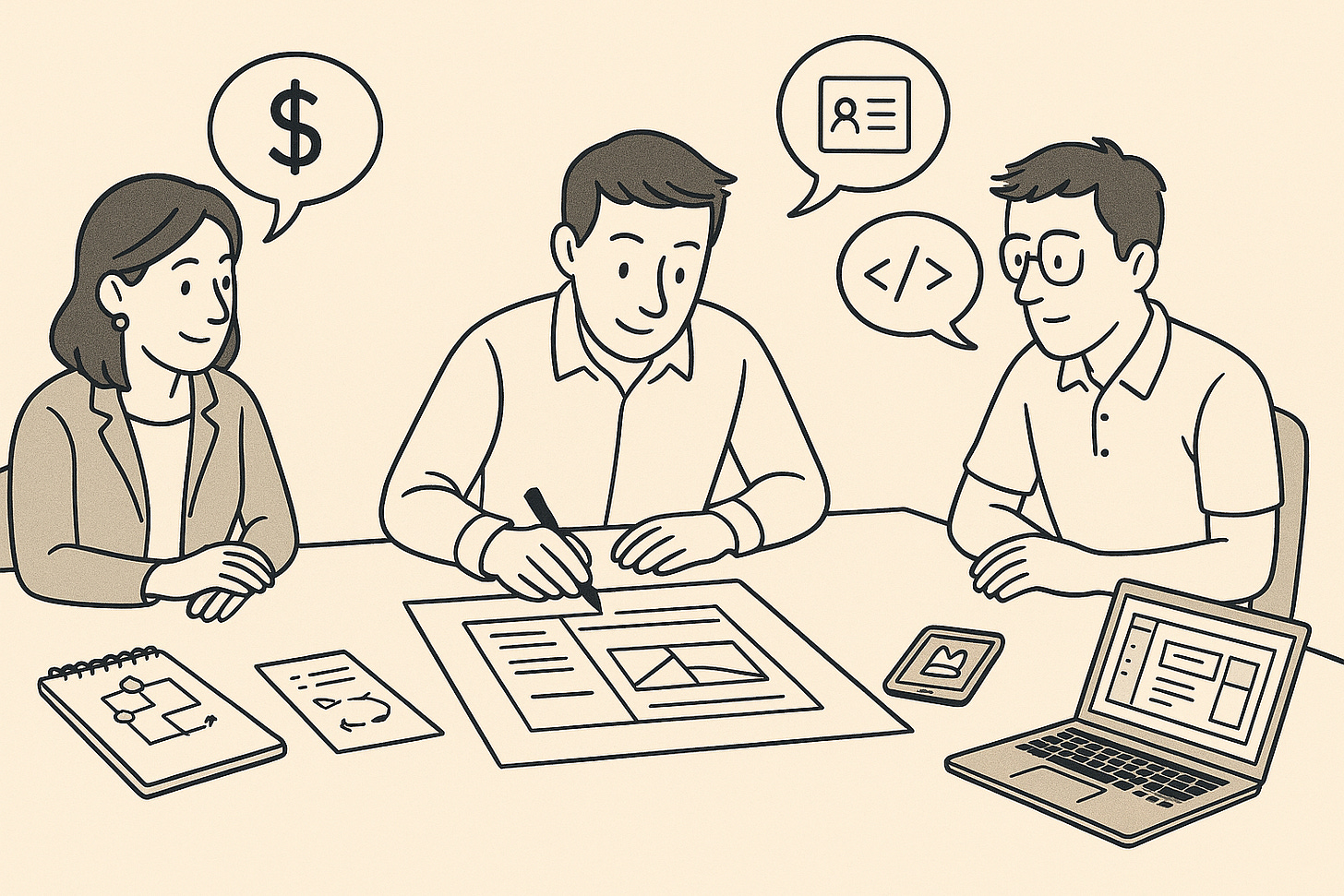Tough Conversations: When UX Has to Mediate a Project Gone Sideways
How visual thinking (and a bit of initiative) can untangle the mess when specs go sideways.
There’s this unspoken myth in UX circles: if you just focus on the user, everything else falls into place. That sounds nice on a coffee mug. But in real project life? That’s only half the story.
Sometimes, it’s not the user that’s blocking progress — it’s the business. Ever-changing specs. A dozen interpretations of the same term. Features getting redefined mid-sprint like a game of corporate telephone. That’s when the role of the designer starts to shift.
You’re no longer just an advocate for the user. You become a translator. A negotiator. A visual therapist for teams on the verge of a communication breakdown.
Sound familiar? Yeah — it’s that moment when your Figma file turns into a peace treaty.
Just Another Day in the Life of a UX Mediator
I recently worked on a project where the business team had expressed their expectations, but things quickly started to drift. Product took those initial specs and adapted them, and by the time they got to development, what was being built only vaguely resembled what was originally intended.
Everyone thought they were aligned — but they weren’t. I could see the gap growing, and nobody was stepping in to bridge it.
So I started wireframing — not for the end user, but for the team. Just to make the invisible visible. And sure enough, the moment people saw the screens, things clicked: “Oh, that’s what we meant.” Misunderstandings surfaced fast.
To get us fully back on track, I went further. I pulled everything together into a shared spec doc and circulated it across product, business, and dev. It wasn’t in my job description, but it was the only way to stop the swirl.
That shift made the difference. People saw the same thing. They could react, question, confirm. And we moved forward.
Moral of the story? Don’t wait for someone to hand you permission to clarify the mess. Design isn’t just screens. Sometimes, it’s leadership in disguise.
When the Fog Rolls In
Here’s what this usually looks like:
The product team defines a feature, but everyone has a different idea of what it actually is.
A stakeholder drops new requirements weekly — sometimes daily — without realizing the ripple effects.
Terms like “rule,” “approval,” or “workflow” get tossed around like everyone agrees what they mean. Spoiler: they don’t.
Suddenly, no one’s building the same thing anymore. The project slows to a crawl. Frustration brews.
And this is where design can quietly save the day.
Design as the Clarifier-in-Chief
The magic trick? Visual thinking. Not just pretty UI, but low-fidelity sketches, decision flows, and annotated wireframes that say, “This is what you’re asking for. Is it really what you meant?”
When people see what they’ve been trying to say, conversations shift. Misunderstandings surface faster. Misalignment gets exposed — and can actually be addressed.
Design becomes a shared language. One that doesn’t require a 12-slide deck or a 60-minute call to clarify.
Wireframes Before Word Docs
In these messy, uncertain moments, you don’t need polished mock-ups. You need something scrappy and disposable:
Quick sketches in Figma or even on paper
Click-through prototypes that simulate interactions, not polish
Simple diagrams mapping user intent to business logic
These tools act like a mirror: they reflect the team's understanding back to itself. And more often than not, that reflection surprises people.
It’s Not About Sides — It’s About Sync
It’s easy to get defensive. “They keep changing things.” “They don’t get it.” But part of senior UX work is stepping into that frustration and offering clarity, not just critique.
There’s actually some psychology behind this. Researchers studying proactive behavior — the tendency to take initiative and effect change rather than waiting for direction — found that it’s strongly linked to better coordination and performance, especially in complex environments. A foundational paper published in the Journal of Management outlines how proactive individuals help reduce ambiguity and promote momentum in team settings (source).
That’s what happens when you draft the spec nobody else will, or wireframe the idea that’s been stuck in limbo. You help the team shift from confusion to momentum.
Design doesn’t just solve user problems. Sometimes it solves team problems.
TL;DR: When in Doubt, Draw It Out
If your project’s off track because of miscommunication or vague specs:
Pull the team into a quick sketching session
Turn the jargon into something you can click or point to
Don’t wait for “final” — show rough ideas early and often
Use design to confirm understanding, not just deliver screens
And when nobody owns the spec? Own it yourself. Sometimes clarity just needs a volunteer.


